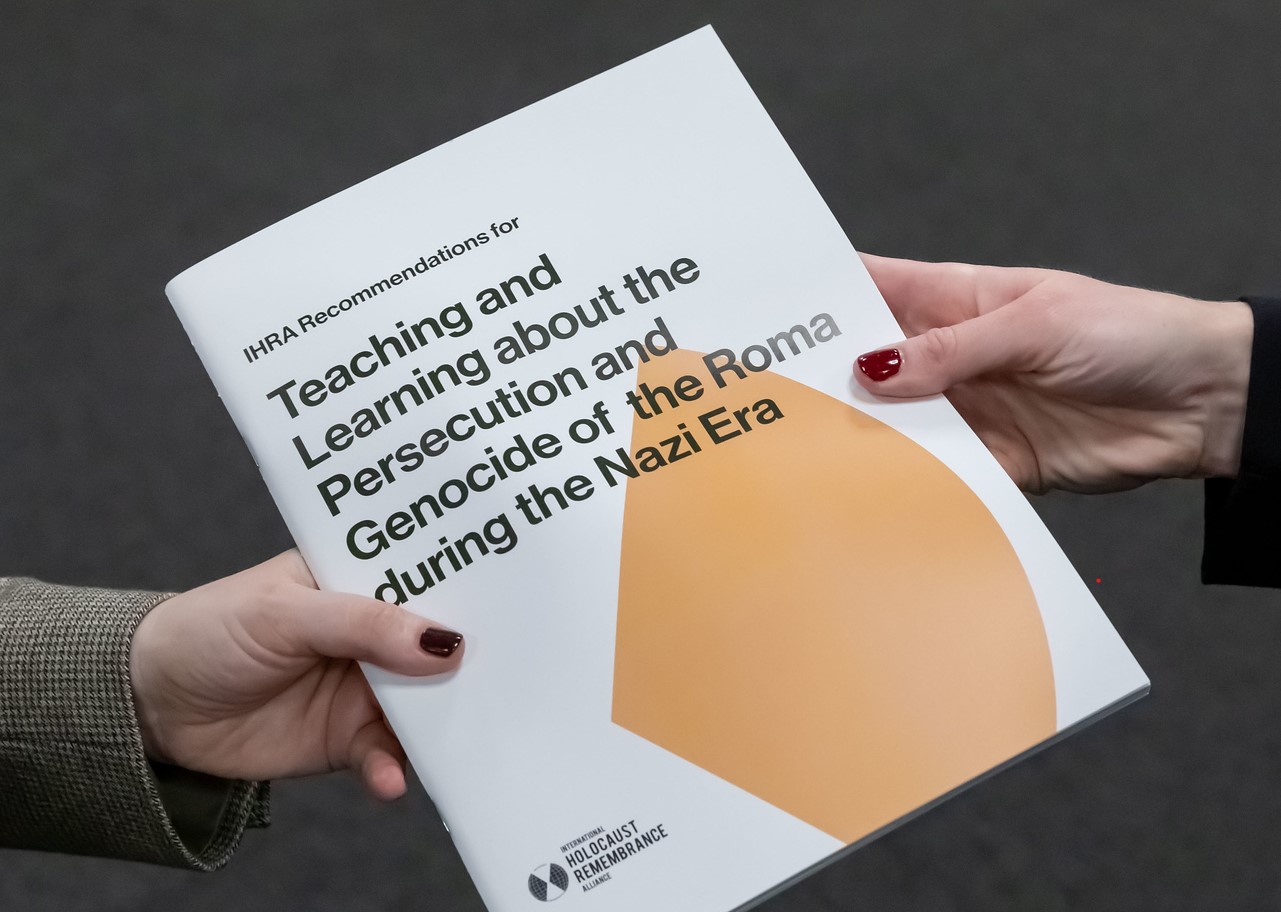Language:
English

IHRA Recommendations for Teaching and Learning about the Persecution and Genocide of the Roma during the Nazi Era
Between 1933 and 1945, European Roma were targeted by Nazi Germany and other Fascist states and their collaborators, fuelled by long-standing discrimination and a racial ideology. It is estimated that up to 500,000 Roma were murdered, while many were imprisoned, used as forced laborers, or subjected to forced sterilization and medical experimentation. Across Nazi-occupied Europe, the persecution of Roma was carried out in different ways by different perpetrators, including occupying forces and local populations, which contributed to varying experiences among Roma communities.
The IHRA Recommendations for Teaching and Learning about the Persecution and Genocide of the Roma during the Nazi Era contribute to the IHRA strategic priorities of safeguarding the historical record of the Holocaust and the genocide of the Roma and countering distortion. With the publication of these Recommendations, the IHRA seeks to provide a strong foundation to support countries in including the history of the persecution of Roma in mainstream research, memory culture, and education. These Recommendations aim to assist not only policymakers but also educators and practitioners in their efforts.
IHRA Recommendations for Teaching and Learning about the Persecution and Genocide of the Roma during the Nazi Era
Benefiting from the expertise of delegates from thirty-five Member Countries, these Recommendations:
- Emphasize the importance of advancing teaching and learning about the genocide of the Roma.
- Develop knowledge of the persecution and genocide of the Roma, as well as their resistance and agency in the face of persecution and murder.
- Foster teaching environments grounded in best practices for learning about the persecution and genocide of the Roma, and offer practical guidance to support the further development of national and regional curricula, educational resources, and teacher training initiatives (including formal, informal, and non-formal education opportunities, and actors and institutions such as museums, memorials, libraries, archives, and civil society
initiatives, including Roma-run organizations). - Promote critical thinking about the persecution and genocide of the Roma during the Nazi era and its legacies, which underscores that a lack of awareness about the genocide has had an impact on the current situation of Roma.
- Contribute to human rights and genocide prevention education. These Recommendations are future oriented, seeking to foster broader awareness about the relationship between the past and present, and a broader inclusion of Roma in memory culture and society.
Learn more about Teaching and Learning about the Persecution and Genocide of the Roma during the Nazi Era
For many generations, Roma have lived in Europe, participated in the development and prosperity of civil societies and contributed to European cultural, social, and economic life.
Today, Roma form Europe’s largest ethnic minority, with an estimated 12 million people. Yet, Roma remain one of Europe’s most marginalized groups, enduring discrimination, violence, and socioeconomic hardship. Progress toward civil rights and recognition of the genocide of the Roma during the Nazi era has been achieved through the efforts of Roma activists, though much work remains.




